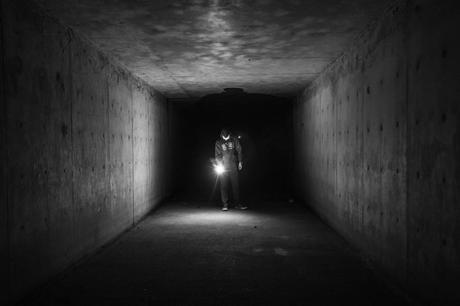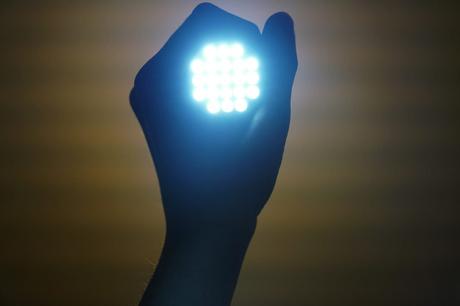Your perfect day out in the backcountry was filled with beautiful landscape views, a couple of critter sightings, and a picture-perfect little lunch spot overlooking the valley below. Things were gearing up to be a day for the books. As you start to make your descent down the mountain to the safety of your car, you find yourself at a fork in the trail you don’t quite remember being there before. Was it a left or a right turn? The long day of hiking has you confused and unsure. You strike on and as the sun slips lower and lower in the sky, you start to cast some doubt on your choice. Everything looks different. You realize it is inevitable that you’re going to be stuck here overnight. It’s time to stop thinking about how to get down but instead how you’re going to be able to get the help you need to do it. Your phone is alive but completely out of range of service, so beyond having some games on it to keep you preoccupied it’s essentially useless. But luckily, you did bring along a couple of pieces of outdoor gear in case of an emergency just like this. You reach for your flashlight and signal out to the sky the universal signal for distress, SOS. Thankfully, there is a group of nearby rangers that see your light flashing through the forest trees and are able to get you to safety.

While getting out and exploring the great outdoors is one of the best things to do, it also comes with some inherent risks. Getting away from other people and out of reach of cell phone service can be freeing, but also leaves you without any way of contacting others for help should something unexpected happen. That’s why having a few life-saving pieces of gear on you when you explore outside the realm of cell service is a very good idea. There’s a number of ways to signal for help when lost like a whistle, a flare gun, or even something primitive like a signal mirror. However, when it comes to survival uses, there is not a piece of gear quite as versatile as a flashlight.
How To Signal with a Flashlight

Should you possibly find yourself unceremoniously out in the wilderness passed sundown, having a flashlight to signal for help can sometimes be the difference between life and death, or at the very least the difference between sleeping in a warm bed or out on the cold forest floor.
Knowing what SOS in morse code is and how to signal it is survival 101. To signal SOS with lighting such as a Fenix flashlight or cell phone camera light, flash the light fast three times, slowly three times, and then quickly three times. It’s important to remember that when it comes to the flashing frequency, the fast flash time does not exceed one second, and the slow flash time exceeds one second. There are some tactical flashlights that come standard with strobe functions or other features that can be used to get rescuers attention. These lights are also much stronger and have a higher lumen rating than the average store-bought flashlight, making the odds of your signal being spotted exponentially higher.
Tactical flashlights are arguably some of the most versatile pieces of gear that you can have. You’d be lucky to have one on your person should you find yourself in a precarious situation. Tactical lights have a variety of uses: you can use one to illuminate your path, defend yourself against any not-so-friendly creatures who you might cross paths with, and most importantly, signal for help and find your way to safety. LED flashlights are relatively lightweight and compact, so they aren’t a burden to carry around. They’re also equipped with powerful, high-lumen beams that can reach distances of at least a few hundred meters, allowing you to signal for help from afar, even in the dead of night.
Built-In SOS Modes

Lastly, most new tactical lights have built-in SOS modes. So if, for some reason, you forgot how to signal SOS (which you shouldn’t!), you can simply cycle through the modes and activate the SOS feature to send a distress signal. However, the one downside to using tactical flashlights to signal for help is that they do depend on batteries, even if they might be rechargeable. The higher the lumens used, the more power it’s going to consume, so use your flashlight wisely. It could be your one ticket out of there. When creating visual distress signals like when using a flashlight, the important thing you need to do is to create contrast. You want your distress signal to stand out against the terrain’s backdrop and be easily recognizable, even if your signals are stationary or if your potential rescuers are a long way off.
To wit, if you choose to get some alone time with nature, it would behoove you to come equipped with signaling gear and the knowledge to use it effectively should you find yourself in the position to need it. Having a basic understanding of signaling and outdoor survival techniques is always a good idea. While you can not be prepared for every situation that may arise, arming yourself with the survival know-how beforehand can help keep you and your fellow outdoor enthusiasts safe and save you from becoming a cautionary tale.

